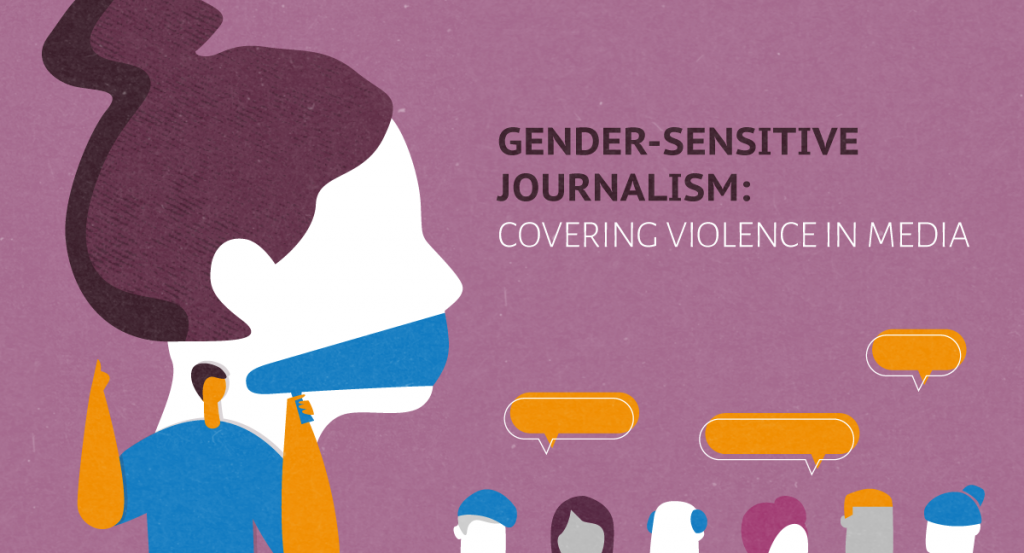About the course:
This course provides a basic understanding of what gender is, gender stereotypes, and how to avoid gender-biased text. Also in the course, you will learn how to cover violence in the media and blogs - from understanding what kinds of violence exist to the language of its coverage: the terms and words that should and should not be written when describing cases of gender-based violence. Also, an important part of the course is a module on how to talk to survivors of violence: how to interview, and what are the ethics of communication. The course is recommended for practicing and beginning journalists and bloggers, teachers and students of journalism at universities in Central Asia. It can be used for professional development by practicing journalists, editors and teachers.
Course Format:
The course consists of 7 modules and is designed for 6 weeks of study. The weekly course load for trainees is 2-3 hours (depending on the complexity of the section). Modules consist of video lectures lasting from 8 to 15 minutes with transcripts, text information with illustrative examples, practical assignments for independent performance, as well as interim and final tests. The allowed number of retakes for the test is 4 attempts; you can take the final test 6 times, and repeat the course up to 4 times.
Requirements
Minimum proficiency in computer information technology (PC user and popular social networking sites).
Background Information:
This course was created as part of the IWPR CA project "Development of New Media and Digital Journalism in Central Asia." The project aims to strengthen the capacity of the media, instructors, journalism students, and practicing journalists in Kazakhstan, Kyrgyzstan, Tajikistan and Uzbekistan to produce high-quality digital modern, unbiased, and objective content. Course materials will be posted only on the media school platform and will be available only to participants who have registered for the course. All courses created as part of the project are the property of IWPR CA and may be used for other projects, at the discretion of IWPR CA.
Intructors:
Liza Kuzmenko - media trainer, journalist, head of the NGO "Women in Media", member of the Commission on Journalistic Ethics (CJE)
Gulnura Toralieva - head of Data Lab, media expert, blogger, media activist, advisor to two prime ministers of Kyrgyzstan, former head of government press service (2015, 2017)
Disclaimer: this course was adapted for Ukraine and translated into Ukrainian language. In English version of the website, you can find it in Ukrainian language.
Гендерночутлива журналістика. Як висвітлювати тему гендернозумовленого насильства в українських медіа
Цей курс охоплює базові знання для журналістів, працівників ЗМІ та блогерів про гендерні стереотипи та способи уникнення написання гендерно упереджених текстів.
ОПИС КУРСУ
Під час курсу ви дізнаєтеся, як висвітлювати насильство в ЗМІ та блогах, від розуміння того, які типи насильства існують, до мови його висвітлення: термінів і фраз, які ви повинні або не повинні використовувати, описуючи випадки гендерно зумовленого насильства. Ще одним важливим компонентом курсу є модуль про те, як спілкуватися з людьми, які зазнали насильства: як з ними робити інтерв’ю, яка етика такого спілкування. Курс рекомендований для початківців, практикуючих журналістів і блогерів, викладачів і студентів факультетів журналістики України. Курс може бути корисним для професійної підготовки журналістів-практиків, редакторів та викладачів.
Інструктор:
Ліза Кузьменко - медіатренерка, голова ГО «Жінки в медіа», членкиня Комісії з журналістської
етики (КЖЕ)
Довідкова інформація:
Цей курс було розроблено в рамках програми IWPR Ukraine Voices. Ukraine Voices фінансується Управлінням Закордонних Справ, Співдружності та Розвитку Великобританії. Цей курс був адаптований з курсу «Гендерно-чутлива журналістика». Як висвітлювати насильство в ЗМІ, доступний у медіа-школі CABAR.asia IWPR і є власністю IWPR. Погляди, висловлені під час курсу, є поглядами тренера і можуть не збігатися з офіційною позицією уряду Великобританії.
Reference Information:
This course was developed as part of the IWPR's Ukraine Voices programme. Ukraine Voices is funded by the UK's Foreign, Commonwealth & Development Office. This course was adapted from the course Gender-Sensitive Journalism. How to Cover Violence in Media available through IWPR's CABAR.asia Media School and is the property of IWPR. Views expressed in the course are those of the trainer and may not coincide with the official position of the UK government.





